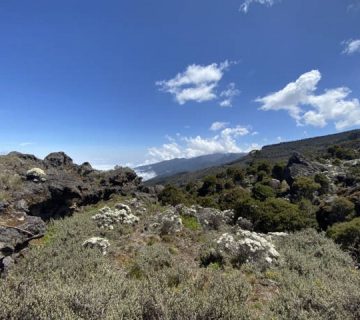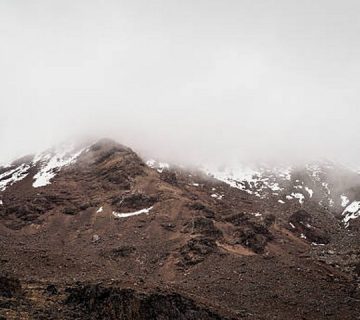Kilimanjaro Trekking Packing Essentials: Your Ultimate Guide
Conquering Mount Kilimanjaro, the highest peak in Africa, is a dream for many adventurers around the globe. The allure of standing atop the "Roof of Africa" is magnetic, spellbinding, and ultimately transformative. But before you immerse yourself in the awe-inspiring views and the exhilaration of ascending through five unique climatic zones, there’s one crucial step you must undertake: packing right. At Kilimanjaro Centre for Trekking and Ecotourism (KCTE), we understand the importance of preparation, and we’re here to guide you through your "Kilimanjaro Trekking Packing Essentials."
Why Is Proper Packing Essential for Kilimanjaro?
Packing for Kilimanjaro isn’t just about comfort; it’s a critical component of your trekking success. The diverse weather conditions and rugged terrain demand a well-thought-out packing list that caters to functionality, safety, and sustainability. With the right gear, you can focus on the journey and the beauty of Kilimanjaro, leaving worries behind.
Essential Clothing: Dressing for the Summit
Base Layers
Begin with moisture-wicking base layers that keep you dry and comfortable. Opt for materials like merino wool or synthetic fibers that offer breathability and insulation even when wet.
Insulation Layer
The temperatures on Kilimanjaro can plunge dramatically, especially at higher altitudes. Pack insulated jackets and pants that provide warmth without excessive bulk.
Outer Layer
A waterproof and windproof jacket and pants are non-negotiables. These layers shield you against the elements, from rain in the rainforest to gusty winds at the summit.
Head, Hands, and Feet
Don’t forget a warm hat, neck gaiter, and quality gloves or mittens. For your feet, thermal socks coupled with sturdy, broken-in hiking boots are a must. Gaiters can be a lifesaver in keeping mud and rocks out of your boots.
Gear and Accessories: Enhancing Your Trekking Experience
Backpack
A durable, fitting backpack (30-40 liters) with comfortable straps and a rain cover is essential. It’s your personal gear hub throughout the trek.
Sleeping Gear
Invest in a quality four-season sleeping bag that can handle temperatures below freezing. A sleeping pad adds an extra layer of insulation and comfort when resting on the mountain’s hard surfaces.
Trekking Poles
Trekking poles reduce the impact on your joints and improve balance on uneven terrain. They can be particularly helpful during descents.
Headlamp
A reliable headlamp and extra batteries are vital, especially for the summit night when you’ll be hiking in the dark.
Miscellaneous Items
Don’t overlook the importance of sunglasses, sunscreen, lip balm, and a broad-brimmed hat to protect against UV rays. A water purification method, such as tablets or a filter, is also necessary to ensure access to safe drinking water.
Health and Personal Care
First Aid Kit
Include altitude sickness medication, pain relievers, bandages, antiseptic wipes, and blister treatments in your personalized first aid kit.
Hydration and Nutrition
Staying hydrated and energized is crucial. Pack a hydration bladder or water bottles that can carry up to 3 liters of water. Energy bars, trail mix, and snacks are great for quick refueling.
Personal Hygiene
Pack biodegradable wet wipes, toothpaste, toothbrush, and a small quick-dry towel. Women should prepare for their specific needs, including menstrual cups or tampons.
The Tech Essentials
Camera
Kilimanjaro’s surreal landscapes are a photographer’s paradise, so bring a camera or a smartphone with a good camera to capture the memories.
Portable Charger
Keep your electronic devices charged with a solar-powered charger or a portable power bank.
GPS or Smartphone with GPS Capabilities
Although you’ll be with experienced guides from KCTE, having a GPS for additional navigation can be a plus.
Ready, Set, Pack!
Packing effectively for Kilimanjaro means balancing between essentials and keeping your load manageable. Every item should serve a purpose, and remember, layering is key to adapting to shifting temperatures.
Why Choose Kilimanjaro Centre for Trekking and Ecotourism (KCTE)?
At KCTE, we are committed to making your Kilimanjaro adventure unforgettable. From expert guides who understand every nuance of the mountain to comprehensive support teams that ensure your safety and comfort, we are dedicated to providing a superior trekking experience. Our deep respect for the natural beauty of Kilimanjaro drives us to offer eco-friendly trekking practices that preserve this magnificent mountain for future generations.
FAQ – Packing for Kilimanjaro
What is the best time of year to climb Kilimanjaro?
The best times are during the dry seasons, from June to October and from December to March.
How much should my pack weigh?
Your daypack should not exceed 15 kg (33 lbs), as porters will carry the rest of the equipment.
Can I rent equipment locally?
Yes, KCTE offers high-quality rental options for gear like sleeping bags and trekking poles.
How do I manage medication for altitude sickness?
Consult with your doctor before departure and carry prescribed medication. Our guides are also trained to assist with altitude-related challenges.
Ready to embark on a journey of a lifetime? Book your Kilimanjaro climbing adventure with Kilimanjaro Centre for Trekking and Ecotourism (KCTE) today, and start gearing up for an epic expedition with our expert tips on "Kilimanjaro Trekking Packing Essentials." Let’s conquer the Roof of Africa together!




